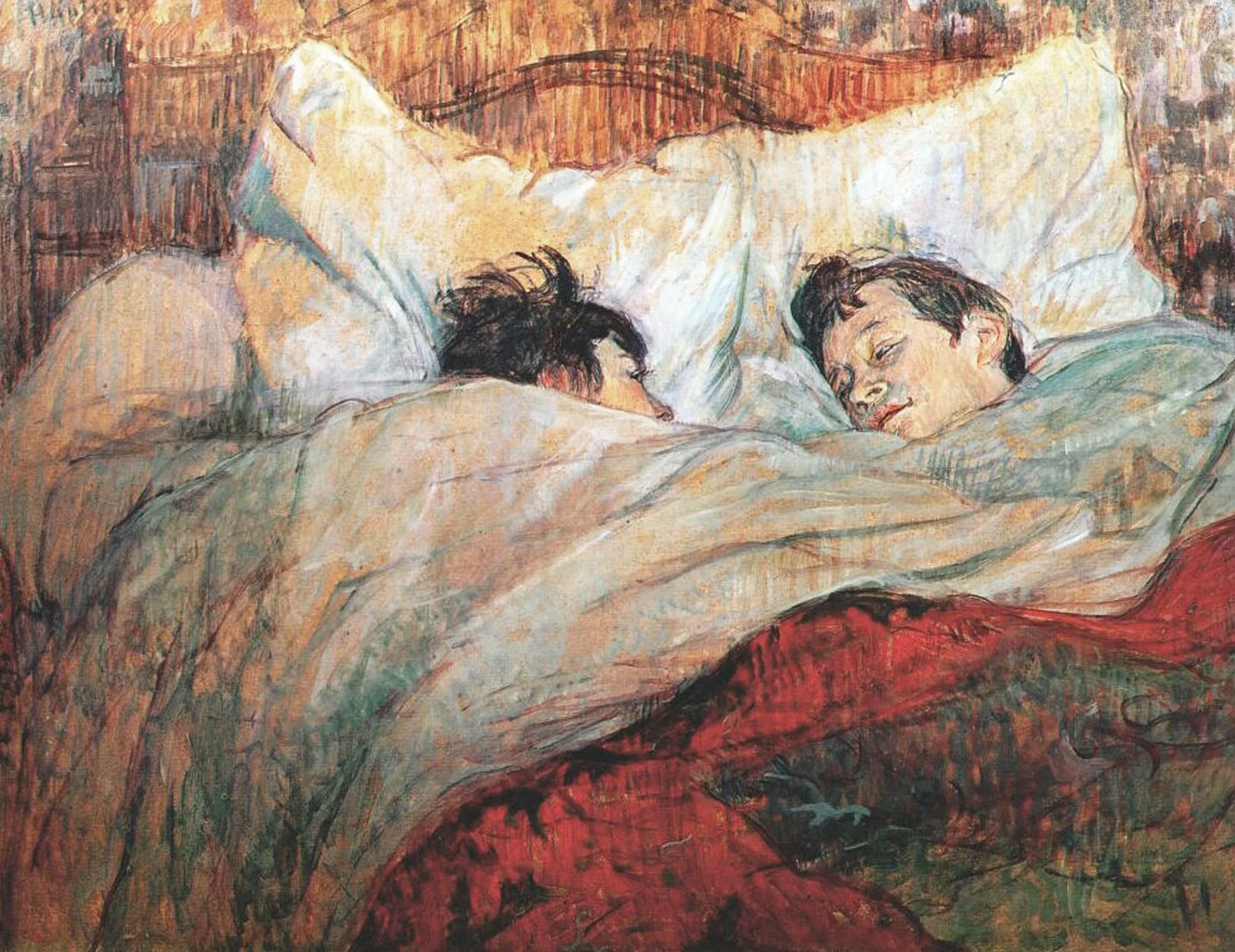Le Lit (The Bed), by Henri de Toulouse-Lautrec, 1893
The Sadness of “Le Lit”
“Le Lit” by Henri de Toulouse-Lautrec is a beautiful piece painted around 1893, a segment of Lautrec’s three-part bed series. While striking at first glance, even with no history behind it, the painting is made all the more beautiful by Toulouse-Lautrec’s life story. In his adolescence, Lautrec broke both his legs and they never healed properly. This caused him to never grow over 5 feet and end up walking with a cane his whole life. He never married, and lived most of his life in isolation due to his disabilities, causing him to become dependent on alcohol to cope. Because of his addiction to alcohol and complications from syphilis he ended up dying young at 36. That underlying sadness in his work is very tangible, you can almost physically feel the yearning in every brushstroke.
His bed series, including “Le Lit,” was just him exploring love, as he wasn’t familiar with it, and he likely never experienced it. The painting is chock full of humanism. The blanket has what looks like a big patch in the middle; it’s homemade, or worn out, and that adds to the cozy feel. The warm, friendly light exudes a sense of love and home, and the thick blankets provide comfort - everything about “Le Lit” is peaceful and domestic, an anomaly in a time where depictions of people in love were often flashy and glamorous, not vulnerable and quiet. Contrasting to the warm lighting and palette, the shading on the sides of the bedding is blue, a color that would normally be associated with sadness. But because of the warmness of the rest of the painting, instead of outright sadness, the blue just adds some emotional depth. It’s a representation of how much the two subjects of “Le Lit” care for each other. You can almost tangibly feel the heaviness of their emotions, overlaid with Lautrec’s own. In the eyes of the painter, the blue is sad; to the subjects, it’s just another expression of their love. To realize that “Le Lit” is just objective observation is truly heartbreaking. He would never live to experience love like this.
The couple in the painting are commonly interpreted as a queer couple, the same couple as in the rest of the bed series. His fascination with this couple might be explained by his own marginalization in society leading him to sympathize with them - it’s unique within the time period because it doesn’t fetishize the intimacy between the women, or present it as something for the male gaze. All Lautrec was trying to do was capture these gentle, small moments of humanity, vulnerability, and queer happiness.
With its humanistic roughness and warm charm, this painting reminds us not to take domestic moments like these for granted. Lautrec is more widely known for “At The Moulin Rouge” and other of his more flashy paintings, but it’s clear that “Le Lit” is still one of his most beautiful.
Written By
Z. Loller











